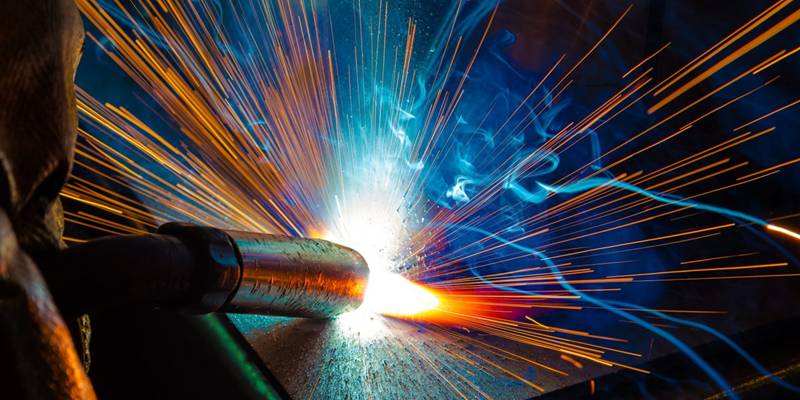Exactly how to Establish an Efficient Welding WPS: Tips and Finest Practices
Exactly how to Establish an Efficient Welding WPS: Tips and Finest Practices
Blog Article
The Ultimate Overview to Welding WPS Procedures: An Extensive Summary for Welders
In the complex globe of welding, Welding Procedure Specifications (WPS) offer as the foundation of making certain quality, consistency, and safety in welding procedures (welding WPS). As we dig right into the various components of a WPS and explore the complexities of qualification and certification, we will certainly uncover the vital duty these treatments play in the world of welding.
Relevance of WPS Procedures
Recognizing the significance of Welding Treatment Specs (WPS) treatments is essential for guaranteeing the high quality and integrity of welded frameworks. WPS treatments work as a roadmap for welders, outlining the necessary actions, criteria, and materials called for to attain an audio weld. By sticking to WPS standards, welders can make sure uniformity in their work, causing dependable and structurally sound welds.
One of the key reasons that WPS procedures are necessary is their function in keeping weld quality and honesty. Adhering to the specified welding parameters and strategies described in the WPS assists stop defects such as porosity, splitting, or incomplete combination, which can endanger the toughness and longevity of the weld. Additionally, WPS treatments are critical for making sure compliance with industry criteria and codes. By adhering to well established WPS standards, welders can demonstrate that their work meets the required requirements for safety and high quality, giving assurance to customers, assessors, and governing bodies. Basically, the relevance of WPS treatments can not be overstated, as they are fundamental to achieving regular, top quality welds that satisfy market standards and specs.

Components of a WPS
A Welding Treatment Requirements (WPS) typically comprises essential components that information the specific requirements for implementing a weld, making sure consistency and high quality in the welding procedure. The key elements of a WPS include necessary variables such as base steels, filler metals, interpass and preheat temperatures, welding procedures, securing gases, welding settings, and post-weld warm therapy requirements.
Base steels refer to the materials being signed up with, while filler metals are made use of to fill up the void in between the base steels during welding. Preheat and interpass temperature levels are important for regulating the warm input and protecting against issues like splitting or distortion. The welding procedure details the specific strategy to be utilized, whether it's gas steel arc welding (GMAW), secured metal arc welding (SMAW), or an additional approach. Shielding gases protect the weld pool from atmospheric contamination. Welding positions define the orientations in which welding can be performed. Post-weld warmth treatment may be necessary to eliminate tensions and improve the weld's homes. A comprehensive understanding of these parts is important for creating a effective and detailed WPS.

Certification and Certification
Having actually developed the vital elements of a Welding Treatment Specification (WPS), the focus currently moves in the direction of the critical aspects of credentials and accreditation in welding techniques.

Certification, on the various other hand, is the formal acknowledgment of a welder's certifications by a pertinent certification body or organization. Welding qualifications are typically based on the certain welding processes, materials, and settings a welder is certified to deal with. Holding a valid welding qualification shows that a welder satisfies market standards and is competent to perform welding tasks to the called for specifications.
Producing a WPS
To develop a Welding Procedure Requirements (WPS) that satisfies market criteria, cautious consideration of welding processes, products, and operational specifications is crucial. The initial step in producing a WPS is to identify the welding procedure to be used, such as gas metal arc welding (GMAW) or protected steel arc welding (SMAW)

Implementing and Checking WPS
Upon settling the detailed Welding Treatment Requirements (WPS) that thoroughly information welding processes, products, operational criteria, and quality control measures, the focus moves to properly implementing and monitoring the recognized procedures. Execution involves making sure that all welders associated with the project recognize with the WPS and follow it thoroughly during the welding procedure. This needs offering sufficient training and guidance to ensure adherence to the defined treatments. Monitoring the WPS entails continual oversight to verify that welding tasks straighten with the documented specifications. Assessments, screening, and top quality control steps are vital parts of the surveillance procedure to identify any kind of concerns or discrepancies immediately. Routine audits and testimonials of the welding treatments help in preserving uniformity and quality throughout the project. Effective implementation and tracking of the WPS are crucial for making sure the stability, strength, click here for more and safety of the welded joints, inevitably adding to the overall success of the welding job.
Verdict
Finally, understanding and complying with Welding Treatment Specifications (WPS) is essential for welders to make sure quality, uniformity, and safety and security in their work. By recognizing the elements of a WPS, getting correct certifications and certifications, creating in-depth procedures, and executing and checking them effectively, welders can improve their abilities and effectiveness in welding practices. Abiding by WPS procedures is crucial for producing high-grade welds and conference market requirements.
In the elaborate world of welding, Welding Treatment Requirements additional info (WPS) serve as the backbone of making certain top quality, uniformity, and safety in welding procedures. The welding process details the details more info here technique to be utilized, whether it's gas metal arc welding (GMAW), secured steel arc welding (SMAW), or an additional method.To develop a Welding Procedure Spec (WPS) that satisfies market criteria, careful factor to consider of welding procedures, materials, and operational parameters is essential. The first step in producing a WPS is to recognize the welding process to be used, such as gas metal arc welding (GMAW) or secured metal arc welding (SMAW)Upon settling the thorough Welding Procedure Requirements (WPS) that carefully details welding processes, materials, operational specifications, and high quality guarantee actions, the emphasis moves to effectively executing and monitoring the well-known treatments.
Report this page